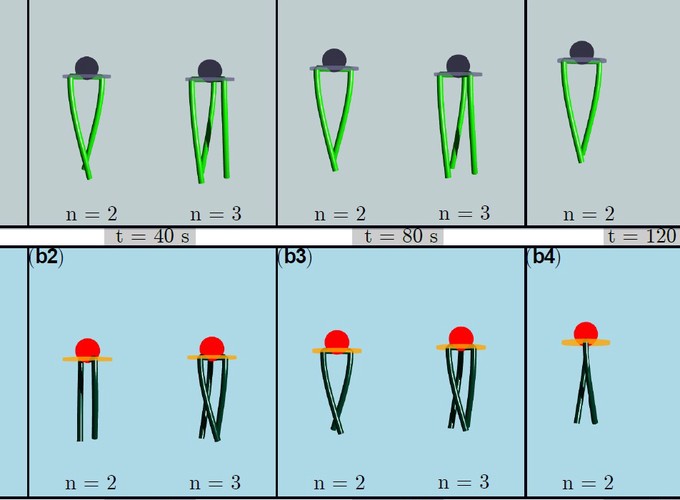Mechanics-based analysis on flagellated robots

Mechanics-based analysis on flagellated robots
Abstract
We explore the locomotion of soft robots in granular medium resulting from the elastic deformation of slender rods. A low-cost, rapidly fabricable robot is presented that is inspired by the physiological structure of bacteria. It consists of a rigid head, with a motor and batteries embedded, and multiple elastic rods – our model for flagella – to investigate locomotion in granular media. The elastic flagella are rotated at one end by the motor, and they deform due to drag from the granular medium, causing the robot to propel forward. The external drag is determined by the flagellar shape, while the flagellar shape changes due to the competition between external loading and elastic forces. In this coupled fluid-structure interaction problem, interestingly, we observe that – depending on the physical parameters of the system – increasing the number of flagella can decrease (regime 1) or increase (regime 2) the propulsive speed of the robot. This nonlinearity in the functional relation between propulsion and the physical parameters of this simple robot motivates us to fundamentally analyze its mechanics using theory, numerical simulation, and experiments. We present a simple Euler-Bernoulli beam theory-based analytical framework that is capable of qualitatively capturing both regimes. Theoretical prediction quantitatively matches experimental data when the deformation in the flagella is small. To account for the geometrically nonlinear deformation that is often encountered in soft robots and microbes, we implement a simulation framework that incorporates discrete differential geometry-based simulations of elastic rods, a resistive force theory-based model for drag, and a modified Stoke q{}s law for the hydrodynamics of the robot head. Comparison with experimental data indicates that the simulations can quantitatively predict the robotic motion in both regimes. Overall, the theoretical and numerical tools presented in this paper can shed light on the design and control of this class of articulated robots in granular or fluid media.